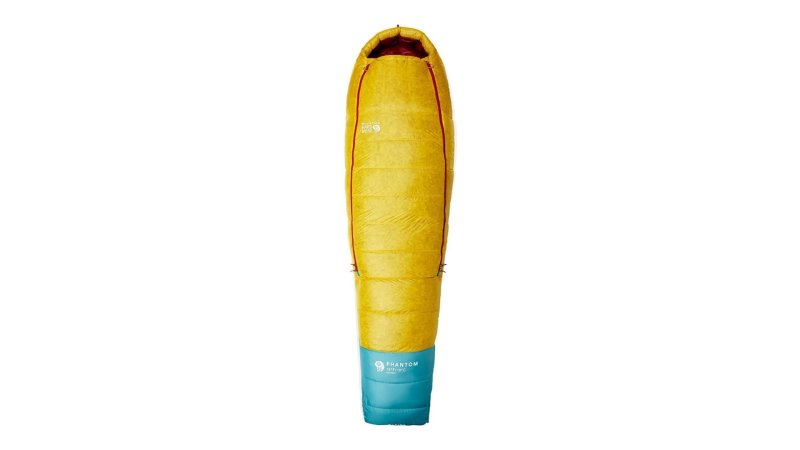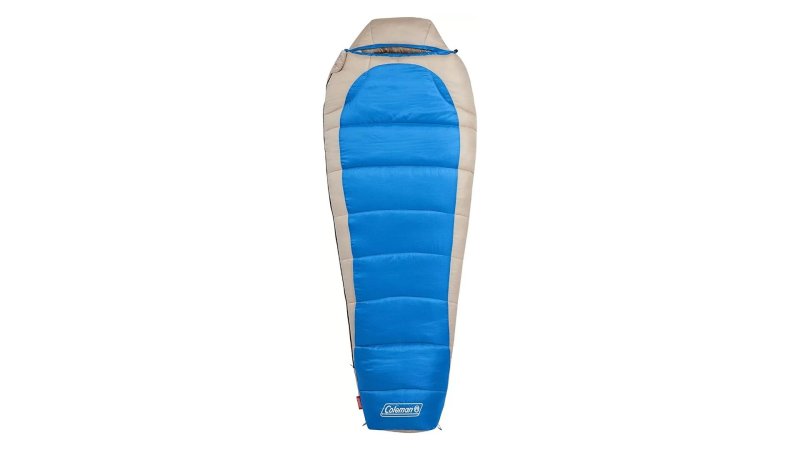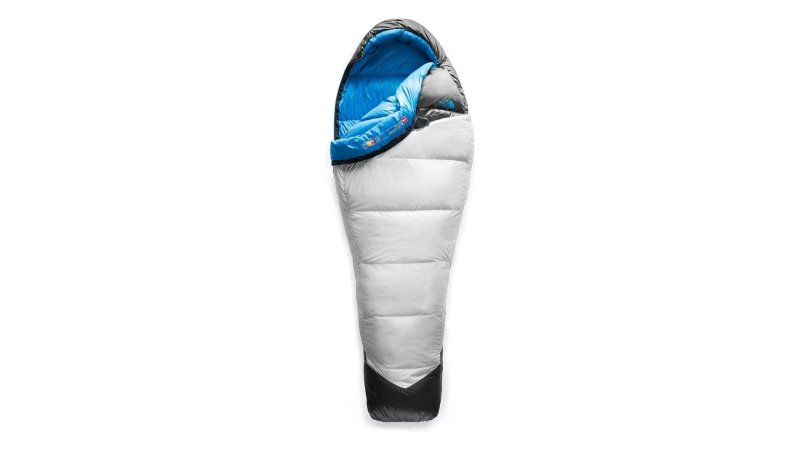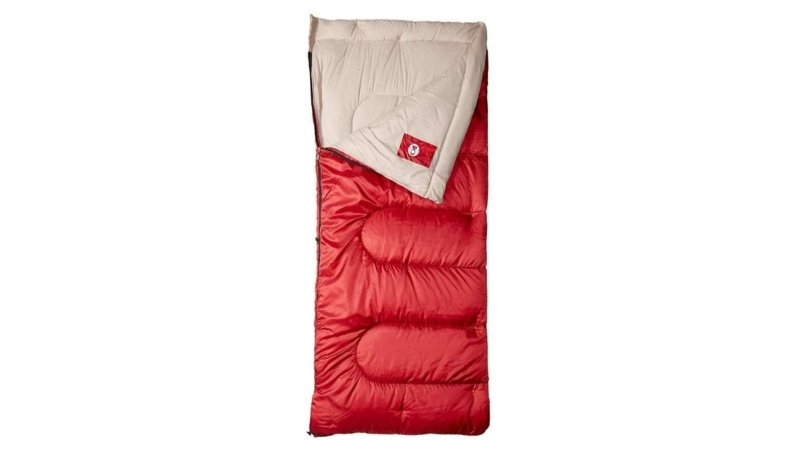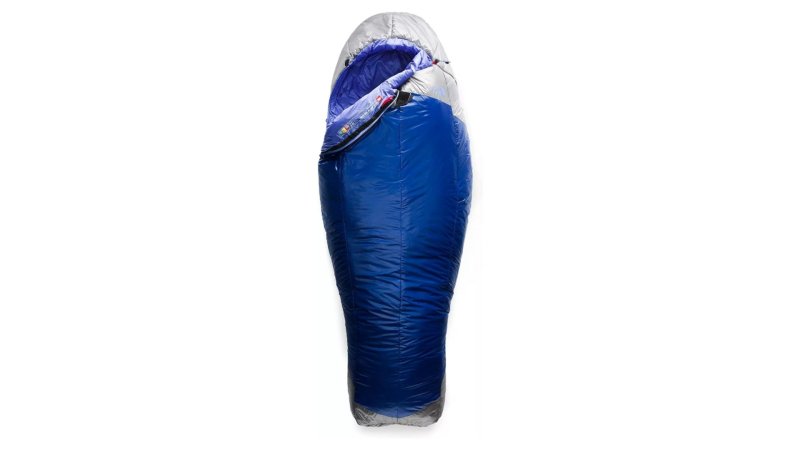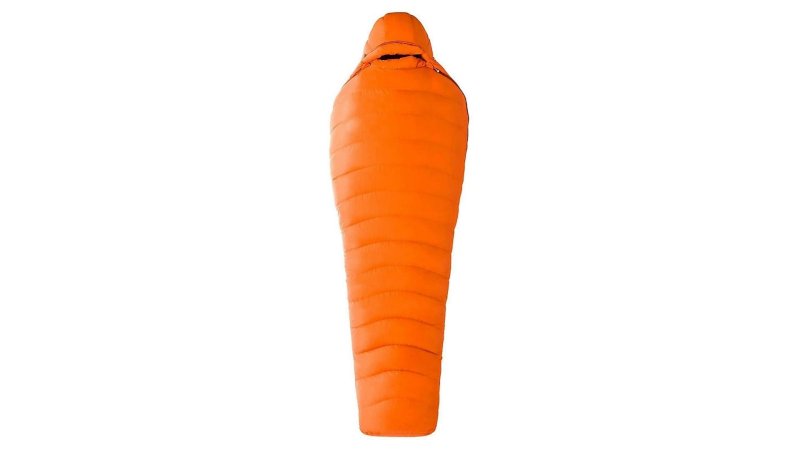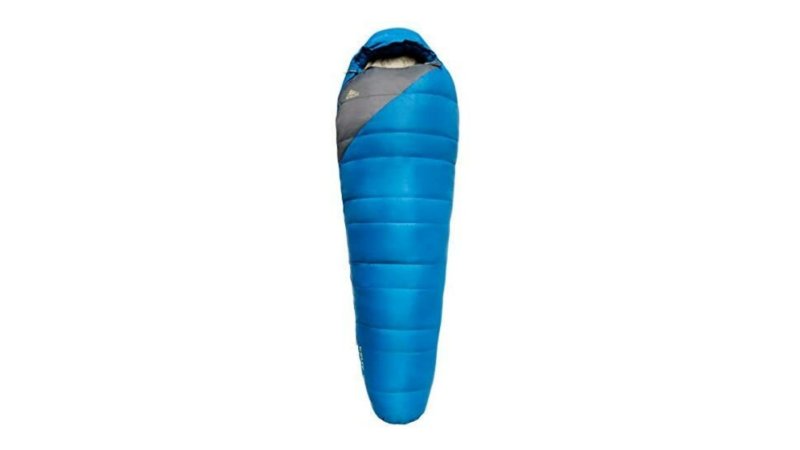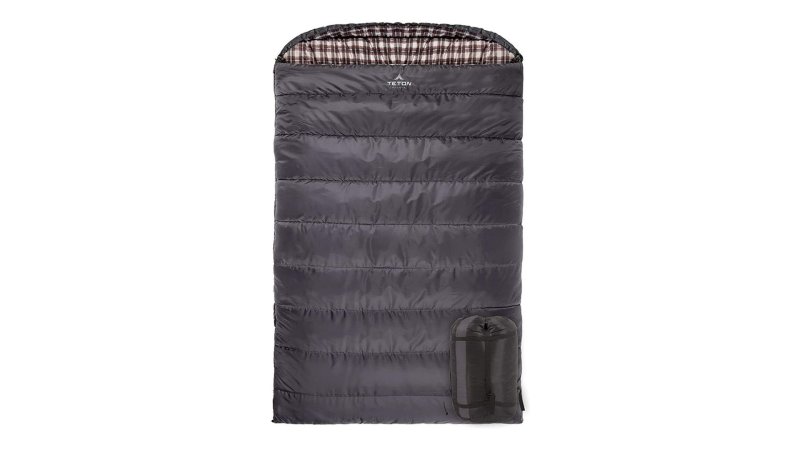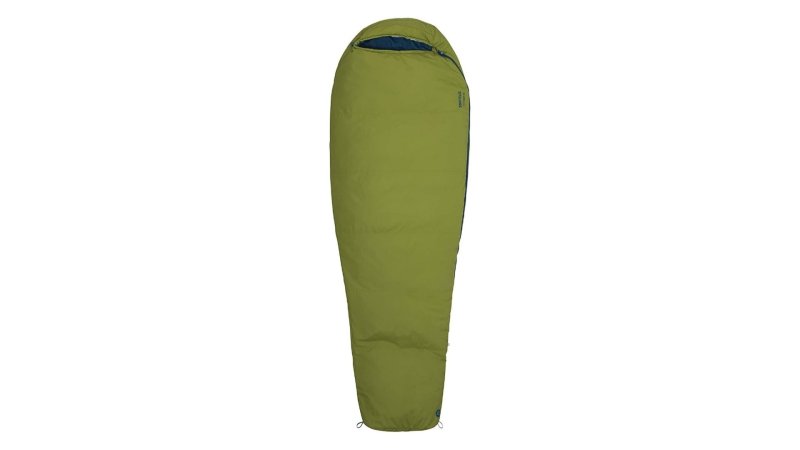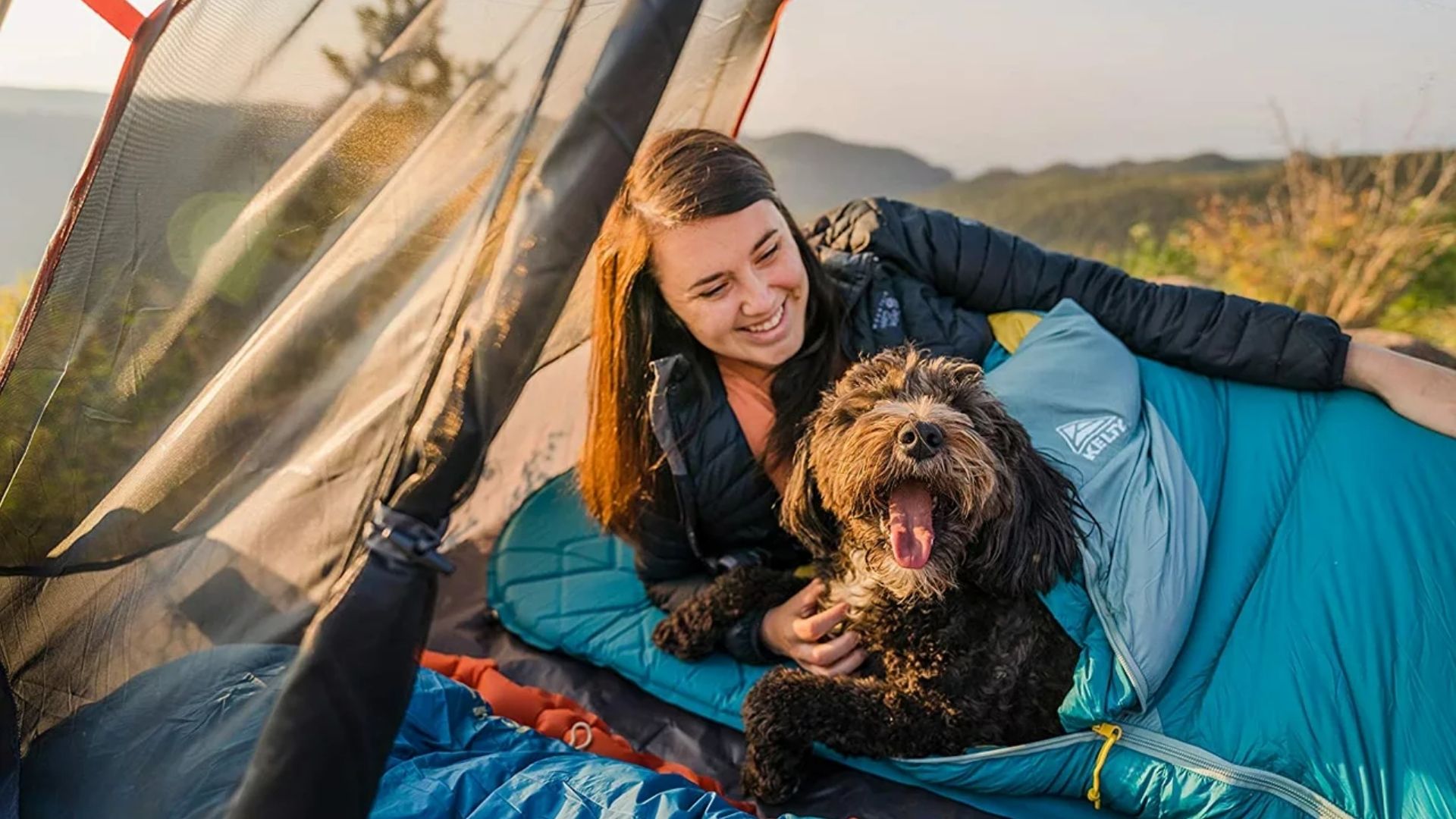

We may earn revenue from the products available on this page and participate in affiliate programs.
In today’s edition of the most luxurious overnight destinations, we’ll be leaving the hotels and rental homes far behind. Some of the best places to spend the night are the parks, forest areas, and campgrounds around your house. With the right gear, you can turn a hike and a campsite into an unforgettable experience.
One of the most important pieces of gear you can bring is your sleeping bag. Take it from someone who’s learned the hard way — spending a little money for a quality sleeping bag is worth every cent. Still, there are quality options for just about every budget as long as you have realistic expectations.
We scoured the internet for some of the best sleeping bags for casual overnight stays indoors, backpacking, and hardcore exploration. There’s also enough background information here to help you make an informed decision and take care of your gear once you buy it and put it to use.
Best Overall
Mountain Hardwear Phantom Alpine
Pros
- One of the warmest and lightest bags on this list
- Incredibly compressible 10-denier shell saves space
- Water-repellent treatment added to exterior
- Zipper pulls glow in the dark for easy exits
Cons
- Priced well above most three-season sleeping bags
- Zippers don’t extend all the way to the food box
- The hood’s draft collar could be better
Product Specs
- Temperature rating: 15 degrees Fahrenheit
- Insulation: 850-fill goose down
- Weight: 2.1 pounds
Best Value
Coleman Silverton
Pros
- Ample Coletherm insulation is adequate for year-round use
- Extra length is great for taller campers
- All-polyester construction will please animal-conscious buyers
- Affordable without sacrificing the features we want
Cons
- “Big and tall” is the only size available
- More than twice as heavy as many other sleeping bags
- Great for tall campers, but too snug for bigger campers
Product Specs
- Temperature rating: Zero degrees Fahrenheit
- Insulation: Polyester
- Weight: 5.2 pounds
Editor’s Choice
The North Face Blue Kazoo
Pros
- Light and strong thanks to the 20-denier shell
- Water-resistant coating keeps moisture out
- ProDown stays warm like natural down but dries faster
- Packs down smaller than a soccer ball
Cons
- The aggressive mummy shape might feel snug around the knees
- Not the most cost-effective option
- May lead to binge-shopping The North Face gear
Product Specs
- Temperature rating: 15 degrees Fahrenheit
- Insulation: 700-fill treated goose down
- Weight: 2.1 to 2.4 pounds, depending on size
Best Sleeping Bag for Established Campsites
Coleman Palmetto
Pros
- Affordable without being cheap
- Designed to roll up easily with integrated straps
- Two Palmetto sleeping bags can be zipped together
- Great for warmer weather
Cons
- Not cut out for hike-in camping or challenging weather
- Campers taller than five-foot-eleven are out of luck
- Doesn’t hold insulation in place as well as higher-end options
Product Specs
- Temperature rating: 30 degrees Fahrenheit
- Insulation: Polyester
- Weight: 1.4 pounds
Best Women's Sleeping Bags
The North Face Cat’s Meow
Pros
- Synthetic insulation uses 50 percent recycled materials
- External loops hold a sleeping pad in place
- Compacts to an even smaller size than the last version
- Fitted hood and insulated zipper baffle retain heat
Cons
- Affordable, but outshined by the Hyper Cat
- For the size, it’s not exactly lightweight
- Compression sack could be a lot smaller
Product Specs
- Temperature rating: 20 degrees Fahrenheit
- Insulation: Synthetic
- Weight: 2.6 pounds
Best Cold-Weather Sleeping Bag
Marmot Lithium
Pros
- Extreme-weather capability without extra weight
- Down Defender protects fill against moisture
- Multiple baffles prevent heat from escaping through the hood opening
- Internal stash pocket keeps valuables close
Cons
- Less versatile than three-season bags
- Use a sleeping pad to protect this bag’s 20-denier nylon
- More orange than a traffic cone
Product Specs
- Temperature rating: Zero degrees Fahrenheit
- Insulation: 850-fill treated goose down
- Weight: 2.8 pounds
Best Mummy-Style Sleeping Bag
Kelty Cosmic
Pros
- Top-shelf features at a bargain-basement price
- DriDown resists moisture to stay warm and sanitary
- Versatile enough for three-season camping
- Kelty has been building quality, affordable gear since 1952
Cons
- Not the most compact once you pack it away
- Hood isn’t exactly roomy
- Stash pocket may be too small for some phones
Product Specs
- Temperature rating: 20 degrees Fahrenheit
- Insulation: 550-fill treated goose down Weight: 2.4 pounds
- Weight: 2.4 pounds
Best Double Sleeping Bag
Teton Sports Fahrenheit Mammoth
Pros
- So much room for activities
- Cotton lining feels warm right away, unlike synthetic materials
- Unzips into two pieces for easy washing
- Comes with a much-needed compression sack
Cons
- Extremely heavy compared to any two sleeping bags here
- Flannel lining will require more frequent cleaning
- Hood is far less effective on a double sleeping bag
Product Specs
- Temperature rating: 20 degrees Fahrenheit
- Insulation: Polyester
- Weight: 14 pounds
Best Kids’ Sleeping Bag
Marmot Trestles
Pros
- Legitimate, quality camping gear sized for kids
- Rugged, 70-denier nylon exterior is tougher than most
- Synthetic fill wicks moisture faster than down
- Bottom lining is blanket-soft, top is extra light
Cons
- Not as warm as many adult three-season bags
- Narrow even for a mummy bag
- Kids will wonder why all their gear isn’t this good
Product Specs
- Temperature rating: 30 degrees Fahrenheit
- Insulation: Polyester
- Weight: 2.6 pounds
Best Lightweight Sleeping Bag
Marmot Voyager 55
Pros
- Packs down to the size of a football
- Cool enough for warm-weather camping
- Full-length, two-way zipper for easy access
- Surprisingly durable, thanks to the 50-denier nylon shell
Cons
- Cutting weight makes this a relatively no-frills bag
- Might be too snug for larger campers
- Don’t push the 55-degree rating; this isn’t a three-season bag
Product Specs
- Temperature rating: 55 degrees Fahrenheit
- Insulation: Down
- Weight: 1.5 pounds
Best Zipless Sleeping Bags
Sierra Designs Night Cap
Pros
- Integrated pad sleeve is a game-changer
- Insulation, liner, and shell are made from recycled plastic
- Regular, long, and women’s sizes are available
- Oversized flap feels like an internal comforter
Cons
- Not as easy to get into as a zippered bag
- Recycled plastic is eco-friendly, but so is natural down
- Pads wider than 20 inches won’t fit in the sleeve
Product Specs
- Temperature rating: 20 degrees Fahrenheit
- Insulation: Synthetic
- Weight: 2.25 pounds
Why you should trust us
During one particularly frigid training evolution in my Marine Corps experience, my issued sleeping bag was one of the most cherished pieces of gear I had. Even when nighttime temperatures dipped into the teens and a humid wind cut through the Virginia trees, I could end each day by sliding into it and becoming toasty warm in minutes. I’ve also done camping and traveling on my own. My personal sleeping bag is a lot newer, lighter, and infinitely cleaner than the one I used back then, but I love it just as much. Your sleeping bag should be one of your favorite pieces of gear. A bad one will leave you miserable and counting the minutes until you can get back home. I’m here to help you find a winner.
Types of sleeping bags
The types of sleeping bags essentially boil down to three categories based on their intended use. If you don’t need protection against cold, windy nights, there’s no need for anything more than a basic sleeping bag. If you’re embarking on a wilderness expedition, you need the best there is. Most people need something in the middle.
Basic
Entry-level sleeping bags use basic materials and simple designs to keep costs down. Remember the sleeping bag you had as a kid? That’s not too different from what we’re talking about.
Basic sleeping bags’ rectangular shape is nice and roomy, but it’s not very efficient at containing warmth. Padding is also limited, so these are best for temperate climates and indoor use. Materials also tend to be on the inexpensive side and prioritize softness, so don’t expect much in the way of breathability. If you’re essentially looking for portable bedding, these are the way to go. They’re also extremely affordable, so you can outfit the whole family on a limited budget.
Three-season
Most people in the market for a sleeping bag want gear that can keep them warm and dry on the trail, then pack down to the size of a cantaloupe to fit in the bottom of their pack. It’s no wonder, then, that most of the sleeping bags you see here are aimed at doing just that.
These sleeping bags use high-end synthetic materials that are strong, but light. Their insulation is very good at keeping warmth close to your body while allowing moisture to be wicked away. The mummy shape is common in this category because it’s energy-efficient and saves a few ounces compared to a larger, rectangular sleeping bag. Compression sacks make packing up a stress-free affair. Just cram the sleeping bag inside little by little and use the straps to tighten it into a compact ball.
Cold-weather
Most sleeping bags can handle fairly cold weather––as cold as most people will encounter––but you’ll need something built for the cold when temperatures drop below zero. These hardcore sleeping bags are a game-changer.
Cold-weather sleeping bags use good insulation and plenty of it. They’re noticeably thicker and heavier than other sleeping bags. The outer shell may be extra thick to block out freezing wind, snow, and ice. Because of the expensive materials that go into building each one, cold-weather bags can be extremely expensive. That’s ok because they don’t just need to keep you comfortable — they need to keep you alive.
Key features of sleeping bags
Insulation
Sleeping bag comparisons begin and end with the insulation. I don’t care how light or soft a sleeping bag is, if I wake up to the sound of my own teeth chattering, I’m going to be upset. More isn’t always better, though, so it’s important to make an informed decision.
Insulation comes in two varieties: natural and man-made. Down has been the preferred insulation for a long time, but some people prefer modern synthetic alternatives. In either case, match your sleeping bag to the type of weather you’re likely to encounter. Most sleeping bags built for the outdoors seem to fall in the 15 to 30 degree Fahrenheit range.
Breathability
Another huge factor when it comes to comfort is breathability. Would you want to sleep in a plastic garbage bag? Do you want your sleeping bag to smell like someone who hiked all day and didn’t shower before bed? Me neither, so avoid cheap sleeping bags that aren’t breathable.
Sleeping bags from the mainstream manufacturers should all be safe picks. Quality materials and insulation allow moisture (but not heat) to escape without letting dampness from the atmosphere in. As a result, you’ll stay dry and cozy all night long. This is especially important in the case of mummy bags that wrap closely around your nose and mouth.
Shape
Back in the day, sleeping bags were all big rectangles. They were roomy, cheap to make, and fit a cot or twin bed well. That kind of thing is still available and works great if you have a bed (or just really nice weather), but they’re not what I’d pick for most outdoor adventures.
Mummy sleeping bags are designed to fit closer to your body, making them broad at the shoulders and narrow at the feet. This doesn’t just cut down on materials and weight, it creates a smaller space for your body to heat. In cold climates, this simple design change makes a huge difference.
Benefits of sleeping bags
Energy-efficiency
In most situations that require a sleeping bag, conserving energy is key. Whether you’re eating calorie-dense food and sticking to an established trail or relying on body heat to stay warm at night, it’s important to be efficient.
A good sleeping bag will trap body heat in its insulation layer to keep the interior of the bag warm. In fact, the less clothing you wear, the better your sleeping bag will work. Quality insulation can be natural or synthetic, and either is worth paying extra for. Burning fewer calories at night will keep you warm without shivering and waking up cold, hungry, and fatigued.
Weight savings
Every ounce counts when it comes to a camping pack. A cheap sleeping bag and a few blankets might work in an RV or cabin, but they take up way too much room and are far too heavy to be a viable option on the trail.
Most of the sleeping bags on this list are intended for backpacking. They use cutting-edge materials to keep you comfortable while keeping weight to a minimum. Being light and durable isn’t cheap, so expect to pay significantly more than you would for an entry-level sleeping bag. Once you’ve made the investment, you can count on a sleeping bag from a reputable brand lasting several years.
Durability
Gear built for the outdoors needs to be tough; plain and simple. Those lightweight materials I wrote about are also surprisingly rugged. Rip-resistant nylon holds up to the realities of life on the trail, although you’ll still want to use a sleeping pad.
Synthetic shells are common, but basic sleeping bags won’t feature the same kind of material as higher-end ones. Pay attention to the denier rating of any sleeping bag you’re thinking about buying. A higher rating indicates thicker (and presumably stronger) material. Some bags also use reinforced panels to strengthen the area that contacts your sleeping pad.
Pricing considerations for sleeping bags
Entry-level
Buying a sleeping bag doesn’t have to cost more than a case of beer. In some situations, that’s perfectly fine. Just make sure you understand what you’re getting into before you haul off on a weekend camping trip.
Budget sleeping bags use minimal insulation and aren’t built to take very much abuse. They also tend to be relatively bulky and heavy. They’re a vast improvement over packing bedding for a night in a cabin or RV, but I wouldn’t put one in my hiking pack. Unless you’re dealing with particularly beautiful weather, my advice is to keep entry-level sleeping bags indoors.
Mid-range
Most of the sleeping bags on this list fall in this happy medium category. Mid-range sleeping bags are built for years of camping, backpacking, and travel. They’re a safe choice regardless of what flavor of adventure you prefer.
Sleeping bags in the $150 to $350 price range use lightweight construction, breathable synthetic materials, and efficient insulation. Some use down, and some use man-made insulation, but they all prioritize keeping heat in and letting moisture out. Compression sacks are generally included to save space in a pack, but air them out for long-term storage to protect your investment. With a little cleaning now and then, you should be set for years to come.
Top-tier
Welcome to the world of rugged wilderness exploration. The very best sleeping bags aren’t built to be cozy a few miles from the trailhead; they’re meant for duty hours away from an emergency extraction by helicopter––weather permitting. They’re the kind of thing hardcore campers use when they set up shop in Antarctica.
To get one of these sleeping bags, you’ll need to be comfortable shelling out more than $1,000. That’s a lot to ask, but you’ll get one of the warmest, most durable sleeping bags in the world. They’re not for everyone, but if I were pushing the limits of human survival, this is exactly where I’d shop.
How we chose our top picks
Our evaluation process for this gear guide was pretty simple. Given a chilly night and a patch of cold, hard ground, would each sleeping bag be something we’d be happy to pull out of our pack? Some are designed for harsher environments than others, but all of them have to inspire enough confidence to earn our trust. Sleeping bags were evaluated in terms of temperature rating, materials, weight, and value. Everything you see on this list was deemed to be one of the best options out there.
FAQs about sleeping bags
You’ve got questions, Task & Purpose has answers.
Q. How do I wash a sleeping bag?
A: Careful spot-cleaning is usually the best option. When you’re done, hang the bag in a well-ventilated area even if you’re confident it’s completely dry. This is also the best way to store your sleeping bag.
Q. How much does a sleeping bag cost?
A: As with anything, you get what you pay for. Some entry-level sleeping bags cost as little as $30. That’s fine for sleeping indoors, but you’ll want something warmer for outdoor camping. Some of our favorite sleeping bags cost between $200 and $300.
Q. How do I measure for a sleeping bag?
A: Sleeping bags don’t have a lot of variation in size, but it’s important to find a good fit. The measurements provided by manufacturers refer to the sleeping bag itself, not the person it’s intended for. Measure your height, chest, and hips, then give yourself some extra room.
Q. Can you put a sleeping bag in the dryer?
A: Every sleeping bag will have its own care and handling instructions. Read them carefully to avoid damaging yours.
Q. How should I store my sleeping bag?
A: If you visit your local outfitter, you’ll see sleeping bags hanging in the open. That’s not just for display; it’s the best way to preserve the insulation. Hang your sleeping bag in the closet or in a loose, breathable bag rather than packing it away in its compression sack.
Q. What are sleeping bags made of?
A: There are several layers to sleeping bags: a breathable inner layer, insulation, and a more durable exterior. Insulation can be down or synthetic, and the other layers typically use lightweight synthetic materials.
Our gear section
Scott Murdock is a Marine Corps veteran and contributor to Task & Purpose. He’s selflessly committed himself to experiencing the best gear, gadgets, stories, and alcoholic beverages in the service of you, the reader.
